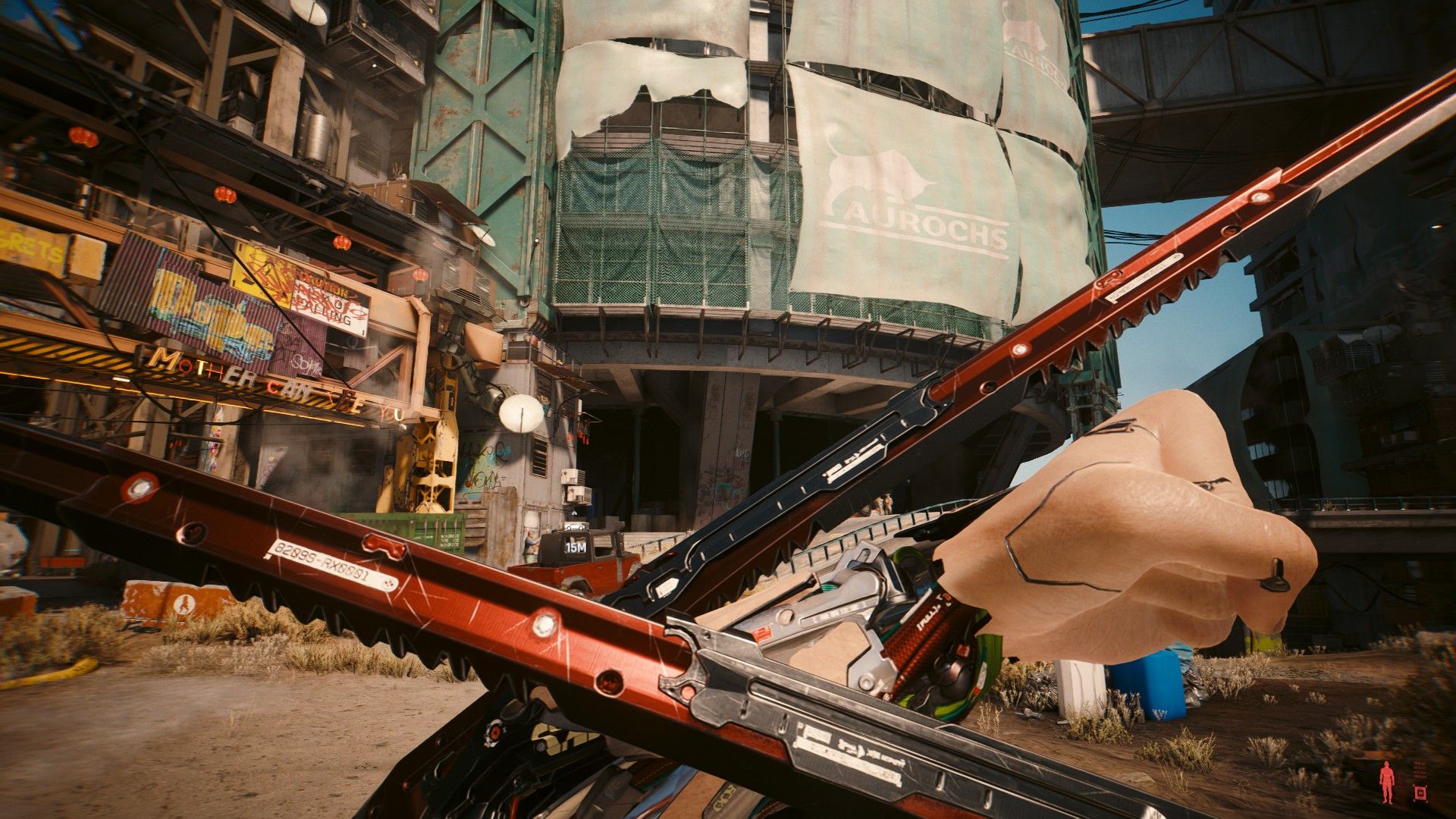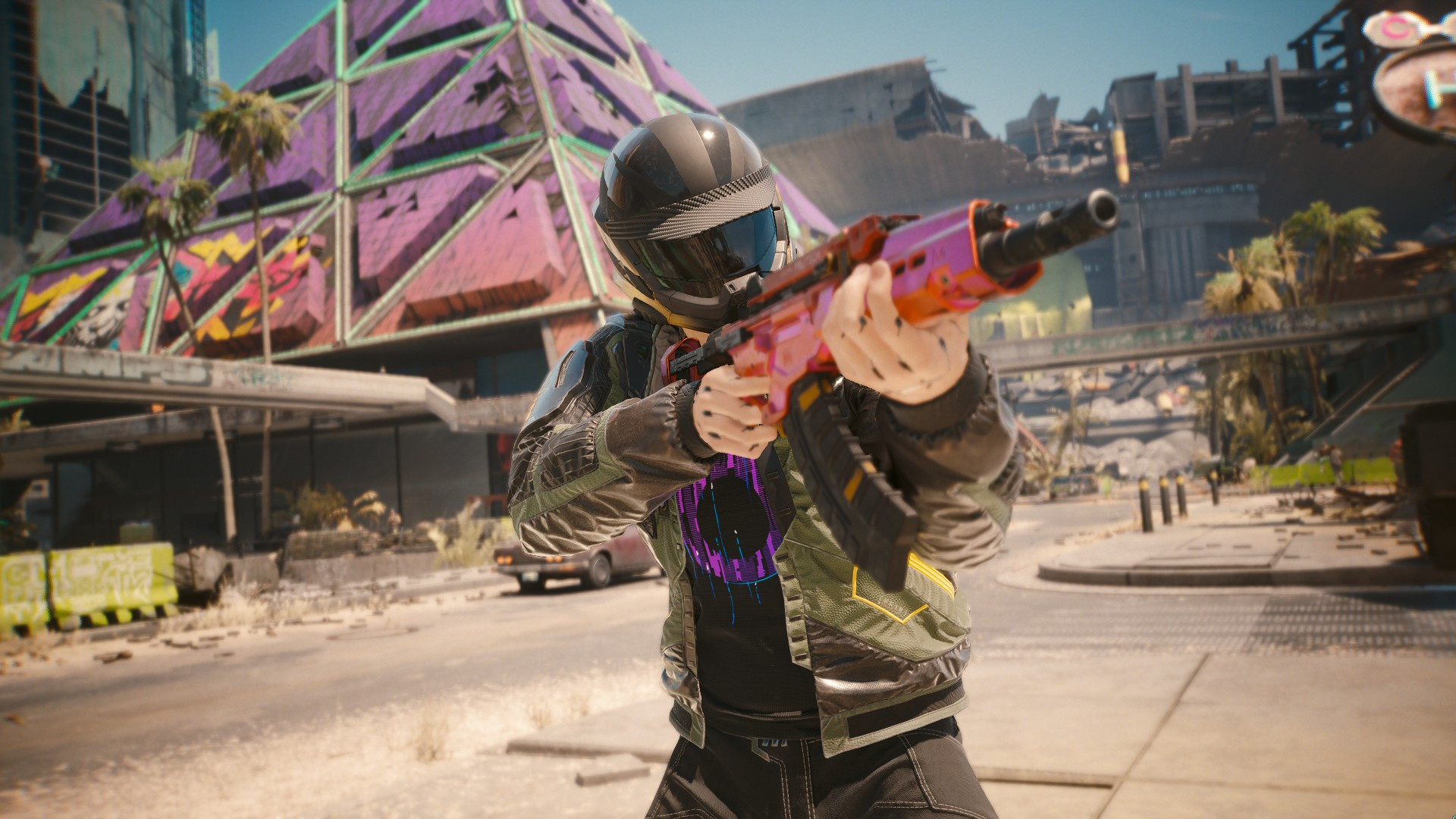As CDPR resurrected Cyberpunk 2077, it focused on one word: 'believability'
When Gabe Amatangelo stepped into the director role for Cyberpunk 2077 in May 2021, morale among the team was low. The RPG had sold 13 million copies, yet was plagued with bugs and ran so poorly on older consoles it was pulled from sale on the PlayStation Store. And despite the incredible detail and density of Night City, players were quick to point to all of the ways it disappointed—the teleporting cops, the braindead NPCs, the skill trees that just amounted to percentage stat bumps.
Figuring out how to solve those problems inspired a whole new way of working on the game and the long process of righting a very large, very ungainly ship.
"I tried to remain empathetic and sensitive and had a lot of conversations with the teams," Amatangelo said in an interview with PC Gamer, reflecting on his first months in charge of Cyberpunk in 2021. "Everyone, after the launch, was like 'Oh, if we'd done this differently, or if I'd been able to do this or add this…' I wanted them to not only feel like their voices were heard, but see examples of their voices being heard."
He and Cyberpunk's other leads reorganized the development team to be more cross-discipline, putting "pods" of developers together who may have once been separated—a writer and level designer, for example. The first six months of that new structure was "bumpy," he said. And then it started to work. "We ironed out some kinks, and then eventually we caught a stride."
Amatangelo pointed to the 2.0 update's revamped police system as a "very visible example" of the collaborative process across tech, art, narrative, and gameplay working. The police now more or less mirror what you'd expect from a Grand Theft Auto game, chasing you in vehicles and searching for you with telegraphed vision cones that let you hide until things cool down. More stars trigger an escalated police response, like roadblocks and fearsome Max-Tac bruisers showing up to wreck your day. The NCPD will no longer show up in the middle of the Badlands—Militech show up instead. And they can now also respond to other crimes, not just yours.
Programming more realistic AI behaviors for the police was a key step, but you can see how all those departments working closely together built something more cohesive. The police revamp is one of many changes in Cyberpunk 2.0 that stem from one of the team's guiding principles: believability.
Finding the fantasy
"Believability was a word that I used recurringly," he said. "Make sure the characters are believable, the narrative is believable, the plot is believable, the world is believable. Obviously it's fiction, but having that believability within the fiction."
Nurturing believability meant fixing obvious, glaring issues—bugs like characters T-posing and the police instantly spawning right in front of your eyes, for example. But it extended into more subtle and also much more significant portions of Cyberpunk's design, informing the new features in both the 2.0 patch and Phantom Liberty.
I really like to drive on the actions in an RPG, the fantasy fulfillment, and the stat stuff is supplementary
Gabe Amatangelo
"When there's cyberware, it's believable that you can do these enhanced actions, not that you have more hit points," he said. "It might not be the first thing you think of with believability. First you might think of a character's face: did we mitigate uncanny valley? That's important too, but believability stretches so far, getting into the overused word 'immersion.' Sometimes you can put your finger on it if it's obvious—if a character is standing in a T-pose, that's pretty obviously not believable. But if something spawn in front of you rather than off screen behind you, there's a difference in believability, right? If you install Gorilla Arms and you can't do things that are strong, that's a believability issue. If your characters don't react to situations in the story in a way that's believable within how you establish that character, that's an issue… So believability was the north star, if you will."
The reworked cyberware and skill systems were designed the same way, which is clearly visible in the new perk trees—many nodes unlock new abilities on the spot or enhance the cyberware you install.
"My design philosophy, I really like to drive on the actions in an RPG, the fantasy fulfillment, and the stat stuff is supplementary to it. That was something me and the lead gameplay designers were very passionate about. We defined a few intuitive fantasies, if cyberware existed, and how you would chrome yourself out and what end of the spectrum you'd go to. From there we explored a few hybrid fantasies and nuances to it. That was a very deliberate [change] with a different design philosophy to allow believability and immersion."


How to start Phantom Liberty: Enter Dogtown
Cyberpunk 2077 Restricted Data Terminals: Get Relic Points
Cyberpunk 2077 airdrops: Loot unique rewards
Cyberpunk 2077 Iconic weapons: The best guns in Dogtown
Cyberpunk 2077 1R-ONC-LAD photo locations: Help the robot
Changes to netrunning skills, like the new ability to queue multiple quickhacks, aimed to create more of a "combo" feeling to hacking rather than being held back by cooldowns. When it came to improving the open world, the developers targeted changes that players would see and feel most visibly, like how AI and crowds react. We noted improvements to AI even back in late 2021, but that was just an early step to the bigger changes in patch 1.5 and 2.0.
The long-term process of building towards this last update was always the plan, Amatangelo said. It required rewriting fundamental pieces of Cyberpunk 2077's code, like bits of the game that were "data-driven" rather than "system-driven," which made them much more difficult and time-consuming to change.
With NPC behavior, for example, different actions like walking down the sidewalk or fleeing in terror would be defined in "volumes," and crossing a threshold (say, V using a shotgun to blow someone in half right beside them) would trigger a change between volumes. "These volumes are all set with very specific properties, and if you wanted to change them game-wide, do you have to go through and change 1,000 different things? Or is there a way to do it en masse?" Amatangelo said.
"That was a lot of the behind-the-scenes stuff. We had to tackle that problem, one-by-one in some cases, and recalibrate a thinking and approach. I'm an advocate for systemic approaches, and found some other advocates within the dev team, and we really pushed systemic approaches across content as much as we could, which then made it possible for us to do the stuff we did in 2.0."
As difficult as Cyberpunk 2077's launch was, and as low as morale sank in early 2021, it spurred the change CD Projekt Red's developers needed to build the game they'd envisioned from the start.
"There's so much collaboration needed to get that feeling right, fulfilling the vision and scaling well," Amatangelo said. "It's more than anyone can do on their own, so you've got to have those connections. Trust is a big thing. And there's a lot of trust [now], because we were in the trenches together through this. It was a difficult time, and when you're in a difficult time together, there's opportunity to really bond based on a common goal and the spirit of wanting to deliver a great experience… the drive for that allowed everyone to get into a situation where they would trust each other and allow each other to work, and it ends up being a force multiplier."

Post a Comment